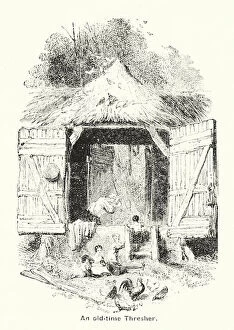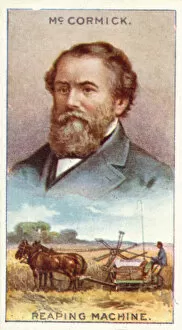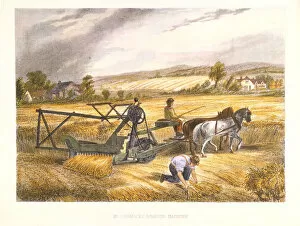Reaping Machine Collection (#2)
"The Evolution of Harvesting: From Ancient Mosaics to Modern Machinery" Step into the world of agriculture through art and history
All Professionally Made to Order for Quick Shipping
"The Evolution of Harvesting: From Ancient Mosaics to Modern Machinery" Step into the world of agriculture through art and history. The meridian Line, also known as The Siesta, painted in 1888-1889, captures a serene moment amidst the fields where farmers rest during their laborious tasks. Fast forward to 1938 with The Booty Cat print, showcasing the beauty and grace of feline companionship in farming communities. But let's delve deeper into the roots of harvesting techniques. Cyrus McCormick's reaping machine revolutionized agriculture in 1831 and gained recognition at the Crystal Palace exhibition in 1851. This invention marked a turning point for efficiency and productivity on farms worldwide. Peasant working, depicted in a captivating oil painting from 1908-1910, portrays the dedication and hard work put forth by individuals who tirelessly toiled on farmlands. Similarly, an ancient mosaic from the 3rd-4th century titled "The Ploughman with Oxen" showcases early agricultural practices that relied heavily on animal power. Moving onto iconic artworks that depict harvest rituals, we encounter Jean-François Millet's masterpiece "The Angelus, " created between 1857-1859. This oil painting immortalizes two peasants pausing their work to pray—an homage to rural life steeped in tradition. Artists have always found inspiration within nature’s bounty; Gustave Caillebotte's Beet Harvest (1890) beautifully captures vibrant scenes from this specific agricultural endeavor. Meanwhile, Farmer -- Fork -- Reaper (1890), a chromolithography piece highlights various tools used during harvest time. Even children’s literature has embraced agrarian themes; Z is for Zachary illustrates farm life with its charming illustration depicting little ones closing gates as night falls—a reminder that it's getting quite late. Advancements didn't stop there—technology played its part too.























